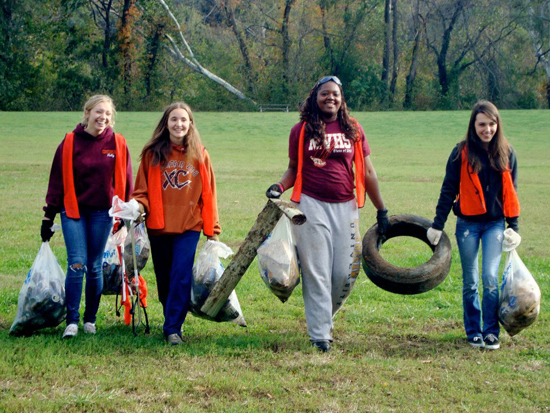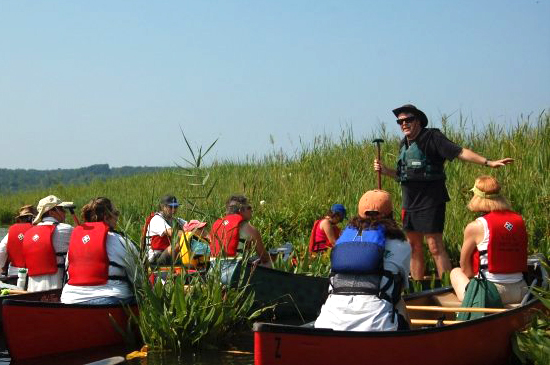Watershed Wednesday: Friends of the Rappahannock
Friends of the Rappahannock hosts clean-ups each fall and spring, but its environmental efforts span the entire year.
On a brisk Saturday in October, 160 volunteers collect 3.5 tons of discarded children’s toys, plastic bottles, crushed automobiles, and various other kinds of trash from their local Chesapeake Bay tributary, the Rappahannock River.
The volunteers, many of them students at the University of Mary Washington and Mountain View High School, are participants in a clean-up hosted by Friends of the Rappahannock, a non-profit advocacy, restoration and education organization based in Fredericksburg, Virginia.

Friends of the Rappahannock – also known as “River Friends” or “FOR” – hosts fall and spring clean-ups each year. But its environmental efforts span the entire year. From engaging at-risk youth in streamside restoration activities to helping residents construct rain gardens in their yards, FOR’s volunteers are saving the Chesapeake Bay in a number of ways.
“We give people the chance to make a difference, to go home feeling that whatever they’ve done, they’ve made some type of positive impact,” says John Tippett, FOR’s executive director. “Providing a range of these fulfilling opportunities is what keeps our volunteers coming back.”
FOR’s diverse collection of volunteer programs are critical for a river so geographically expansive: the Rappahannock travels from the Blue Ridge Mountains to the Chesapeake Bay, transecting landscapes that range from agricultural (in the headwaters and tidewaters) to urban (near Fredericksburg).
Along the its course, the river experiences nearly every type of pollution pressure that can be found in Virginia: from livestock manure on farm fields to fertilizer from suburban lawns.
How does FOR help reduce these pollution pressures? The group’s strategy varies from community to community. FOR takes into account the pollution source (anything from animal waste to fertilized lawns), but also considers the interests of residents, the involvement of local governments, and the availability of staff and volunteers.
“We strive to develop a variety of activities and volunteer opportunities to engage our members and other community members,” explains Sarah Hagan, volunteer coordinator at FOR.

Here are a few of our favorite ways you can get involved with FOR:
- Livable Neighborhood volunteers work to improve water quality in their community by introducing their neighbors to simple, sustainable lifestyle changes.
- Get the Dirt Out volunteers identify erosion and sediment problems on lands that have been disturbed by development or construction. They work with FOR to implement policy and restoration tactics to mitigate these pollution problems.
- AmeriCorps volunteers organize river trips, install rain barrels on residential properties, and conduct environmental education programs.
- Weed Warrior volunteers remove invasive plants: aggressive, non-native vegetation that threaten native plants and wildlife.
- Environmental educators lead students from preschool through 12th grade in hands-on riverside lessons.
- FOR’s annual fundraiser, Riverfest, and other special events
Contact FOR to get involved today! And if you don’t live near the Rappahannock, don’t worry; there are plenty of small, volunteer-based watershed organizations throughout the Chesapeake Bay region that you can get involved with!
MORE from FOR:
- Learn how to reduce pollution by greening your lawn, installing a rain garden and disconnecting your downspout
- Save water and help the river while lowering your water bill
- Introduce your community to low-impact development: rain gardens and other techniques that reduce polluted runoff
Images courtesy Friends of the Rappahannock

Comments
There are no comments.
Thank you!
Your comment has been received. Before it can be published, the comment will be reviewed by our team to ensure it adheres with our rules of engagement.
Back to recent stories